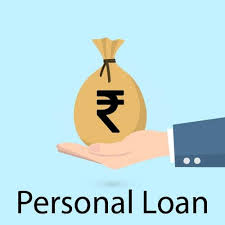Home Loan
.jpg)
Home Loan
HOME LOAN
When you think ‘home loan’, we’re sure you think about mountains of paperwork, masked interest charges, and a bunch of regulations that don’t make sense to you. From repayment periods to rental yields and reducing interest to subvention clauses, buying a home can be more daunting than exciting when you’re looking to get a home loan. So we thought we’d decode the nuances of getting a home loan, so you can refer to this Home Loan 101, the next time you start planning to buy your dream home.
Commonly used terms in Home Loan
Before we get to the types of home loan, let’s first understand the common terms that you can come across when taking a home loan.
Down payment: It is the minimum amount you have to pay to purchase a property and get a home loan. Usually, the down payment is around 10-20% of the value of the house. The Reserve Bank of India (RBI) mandates banks to give 70-90% of the property value as home loans. Hence, the rest has to be funded by the buyer in the form of a down payment.
Tenor: It is the total duration of the home loan. The maximum tenor of a home loan can be around 30 years. Borrowers have to pay back the principal and interest during this period.
Equated Monthly Instalment (EMI): This is the monthly payment you will have to make to the bank to repay your home loan. The EMI consists of both the principal and interest and the proportion of the principal and interest keeps changing as you progress in your home loan tenor.
Loan-to-value: The loan-to-value ratio is the proportion of the loan amount to the value of the house. Lenders usually give only a portion of the property's value as a loan. This is determined by your credit history, loan amount, and property type.
Fixed interest rate: When the interest rate of a loan doesn’t change throughout the tenor of the loan, then the loan is said to be a fixed-interest home loan.
Floating interest rate: If the interest rate changes with market conditions, then the loan has a floating interest rate regime. The interest of your home loan is pegged to a benchmark rate such as the repo rate. Hence, whenever the repo rate changes, the loan interest rate also changes.
Credit score: Credit score is an indicator of your creditworthiness. It is calculated by taking various factors into account, such as your credit history, credit utilization, length of credit, and types of credit accounts. The credit score keeps changing over the tenure of your loan based on how efficiently you repay your loans. Banks check your credit score to decide the loan amount and interest rate they can offer you. A high credit score can get you a low-interest rate.
Sanction letter: It is a letter that your bank issues stating your eligibility for the loan. It contains all the details such as the loan amount, interest rate, EMI, and tenor of the loan.
Collateral: Collateral is a security against which a bank gives a loan. In the case of a home loan, the property that you are investing in is a collateral against which the banks offer you a loan.
Disbursement: When the banks credit the loan amount to your bank account, it is called disbursement. The disbursements can either happen in one go or in partial instalments as per your agreement with the bank and the builder.
Amortization schedule: A table including details of the principal and interest component in an EMI for the entire tenure of the loan is an amortization schedule.
Default: When you fail to pay an EMI, it is considered as default. Banks usually charge a certain penalty on unpaid EMIs.
Prepayment: Paying a part of your home loan in advance to reduce the interest obligations is known as prepayment. The money you prepay goes towards the principal and hence reduces the total interest obligation. However, it is important to check with the bank for any prepayment penalties.
Foreclosure: When you pay your entire loan balance in full in one go before the tenor of your loan is complete, then it is called foreclosure. RBI mandates banks not to change any fee or penalty for foreclosure of home loan accounts.
Popular Offerings
Personal Loan - MrLOANJI.Com
Request for Price?
Loan Services - MrLOANJI.Com
Request for Price?
Home Loan - MrLOANJI.Com
Request for Price?
Financial Services - MrLOANJI.Com
Request for Price?
Business Loan - MrLOANJI.Com
Request for Price?
Review & Rating
4,7
Annette Black
Elementum ut quam tincidunt egestas vitae elit, hendrerit. Ullamcorper nulla amet lobortis elit, nibh condimentum enim. Aliquam felis nisl tellus sodales lectus dictum tristique proin vitae. Odio fermentum viverra tortor quis.
Darrell Steward
Vel dictum nunc ut tristique. Egestas diam amet, ut proin hendrerit. Dui accumsan at phasellus tempus consequat dignissim.
Floyd Miles
Viverra nunc blandit sapien non imperdiet sit. Purus tempus elementum aliquam eu urna. A aenean duis non egestas at libero porttitor integer eget. Sed dictum lobortis laoreet gravida.
Ralph Edwards
Elementum nisl, egestas nam consectetur nisl, at pellentesque cras. Non sed ac vivamus dolor dignissim ut. Nisl sapien blandit pulvinar sagittis donec sociis ipsum arcu est. Tempus, rutrum morbi scelerisque tempor mi. Etiam urna, cras bibendum leo nec faucibus velit. Tempor lectus dignissim at auctor integer neque quam amet.






.jpg)
